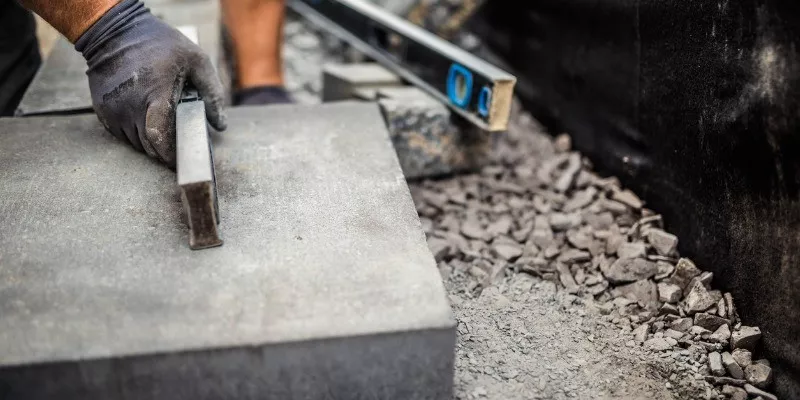The Unilock retaining wall system creates a stylish and consistent look in your backyard, front yard, or anywhere else. There are many reasons you might want to build one yourself. Your Unilock wall can be placed strategically to give you more space, enhance landscaping, protect from flooding and erosion, as well as create a property boundary. However, it does take planning and time to get these great results.
Wondering how to build a block retaining wall yourself? Here are the main steps to start strategizing and building based on what you envision for your space.
Key Steps to Retaining Wall Installation
- Create a Plan. When you plan your wall, you’ll need to do more than just choose your color and matching coping. You’ll also need to select your wall’s location and decide how long and high you’ll make it.The higher and longer your wall, the more complex it will be and the more likely you’ll need a professional. There are many details that go into keeping a wall stable. For example, at a certain height, retaining walls need concrete footers to hold them in place. Don’t hesitate to reach out for some advice while planning.
- Excavation and Back-fill. Block retaining walls aren’t just above-ground features. In order to be stable, they need to be built a few feet into the ground. You’ll need to dig out along your wall site and put down layers of compacted dirt, gravel and bricks to make it secure.
- Lay Drainage. If your wall will need drainage, you have to add those features before you build the wall above ground level. You may choose weeping tiles, pipes, or other drainage solutions. Even walls that are meant to prevent erosion need to release water somewhere. You should consult with an expert to determine where your wall should drain and how that will affect your landscape.
- Build Up. With a proper foundation laid, all that’s left to do is build up. If you’ve chosen a sturdy build material, such as Unilock bricks, this should be straightforward with little room for error. The planning and foundation phases are really what makes a retaining wall secure.
That above being said, there are many common pitfalls you can run into when building a backyard retaining wall. Some brick systems are rigid and not meant to bend. You also have to be careful to excavate and back-fill the wall foundation properly. The best course of action is to ask for assistance from an expert or bring in a professional team to ensure everything is installed properly.
Here’s a great short video that shows some of the possibilities with U-Cara retaining wall installations.
If you don’t have the time to learn how to build a block retaining wall, reach out to us at Lane’s Landscaping. You can have a beautiful, sturdy wall without the hassle.



